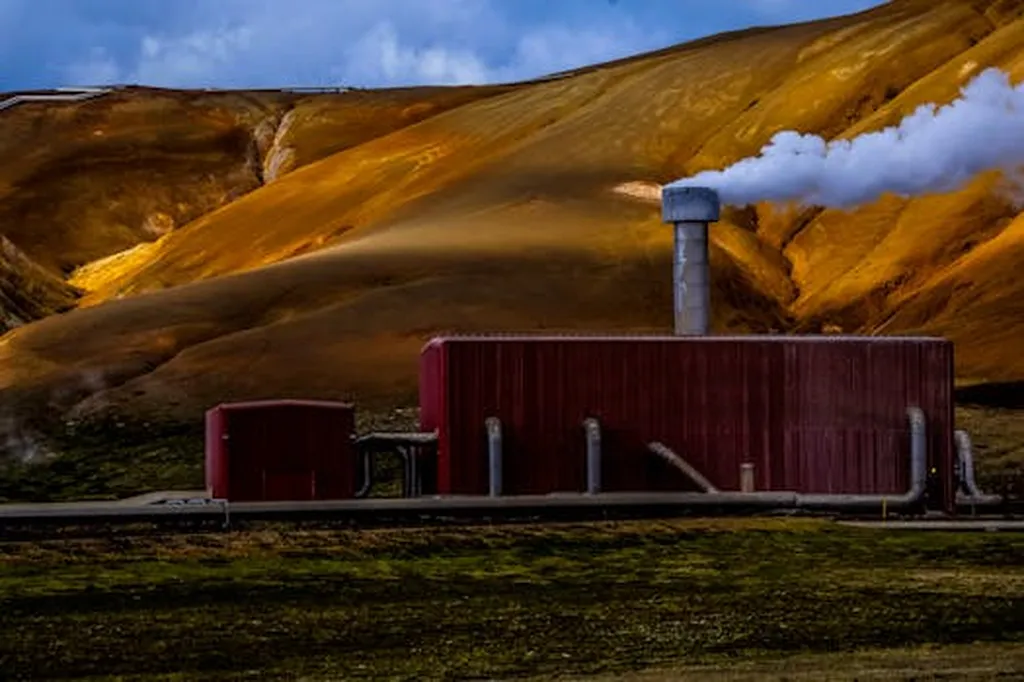In the heart of Tianjin, a city bustling with economic activity and urban development, lies a hidden treasure trove of renewable energy: deep geothermal resources. A recent study led by Qiuxia Zhang from the Center of Hydrogeology and Environmental Geology at the China Geological Survey, published in *Carsologica Sinica* (translated as “Karst Science”), has shed new light on the hydrogeochemical characteristics and circulation patterns of these resources, offering a promising pathway for sustainable energy development.
Tianjin’s geothermal resources, primarily located south of the Ninghe–Baodi Fault, are a mix of porous thermal reservoirs and bedrock fracture-type reservoirs. These resources hold immense potential for exploitation, providing a clean and renewable energy source that could significantly contribute to the city’s green development goals. “Geothermal resources are pivotal for advancing green development and establishing a clean energy system,” Zhang emphasized, highlighting the importance of this study for the energy sector.
The study involved extensive sampling and analytical testing of geothermal fluids, revealing a pH range of 7.08 to 8.43, indicating a weakly alkaline nature. The total dissolved solids (TDS) ranged from 762.1 to 6,040.4 mg·L−1, with an average of 1,768.97 mg·L−1. Along the flow path, the anionic composition of the geothermal fluids exhibited significant shifts, transitioning from bicarbonate dominance to chloride and sulfate dominance, accompanied by an increase in TDS.
Zhang and her team used Gibbs plots and ion ratio coefficients to demonstrate that water-rock interactions are the key factors influencing the chemical composition of geothermal fluids. “Cl− and Na+ primarily originate from the dissolution of salt rocks, while Ca2+ and Mg2+ ions are mainly affected by the dissolution of carbonate minerals,” Zhang explained. Cation exchange processes also played a significant role, increasing Na+ concentrations and decreasing Ca2+ and Mg2+ concentrations. Gypsum dissolution was identified as a significant source of sulfate in geothermal fluids, inducing a common ion effect that promoted the precipitation of calcium carbonate.
Isotopic analysis of hydrogen and oxygen revealed that atmospheric precipitation is the primary source of recharge for geothermal fluids. However, the isotopic drift observed in most geothermal fluids indicated deep circulation, with lateral recharge serving as the main mode of replenishment. During circulation, these fluids exchanged oxygen isotopes with the surrounding rocks.
The study also highlighted the importance of reliable temperature estimation methods. Plotting the geothermal fluids on the Na-K-Mg ternary diagram showed that all samples fell within the partially equilibrated and immature fields, indicating that cationic geothermometers are not recommended for estimating reservoir temperatures. Instead, the study found that SiO2 geothermometry can reliably estimate temperatures, with reservoir temperatures derived from the quartz geothermometer generally higher than those from the chalcedony geothermometer and exceeding the measured wellhead temperatures.
Using the silicon-enthalpy hybrid model, the team analyzed deep circulation temperatures and cold water mixing in geothermal fluids. The cold water mixing ratios ranged from 0.01 to 0.77, resulting in estimated deep circulation temperatures of the geothermal fluids between 94.54 °C and 160.90°C. The maximum thermal circulation depth for the deep reservoir was estimated to range from 2,383.28 m to 4,279.28 m.
Based on these findings, the team developed an initial conceptual model for geothermal fluid circulation. This model divides the area along the Ninghe–Baodi Fault, designating the recharge zone mainly in the bedrock-exposed region of Jixian county to the north. Atmospheric precipitation infiltrates through this and adjacent deep faults, entering enclosed and semi-enclosed thermal reservoirs in the southern plain. As the precipitation flows, it is progressively heated by underlying heat sources, leading to the dissolution of calcite and dolomite and the accumulation of Na+ and Cl−.
This study is of great significance for understanding the genetic mechanisms, occurrence modes, and geochemical evolution patterns of underground thermal water. It provides a theoretical basis for the sustainable development of Tianjin’s geothermal resources, offering valuable insights for the energy sector. As the world shifts towards renewable energy sources, geothermal energy is poised to play a crucial role in meeting global energy demands sustainably. This research not only advances our understanding of geothermal resources but also paves the way for their effective exploitation and utilization, contributing to a cleaner and greener future.

